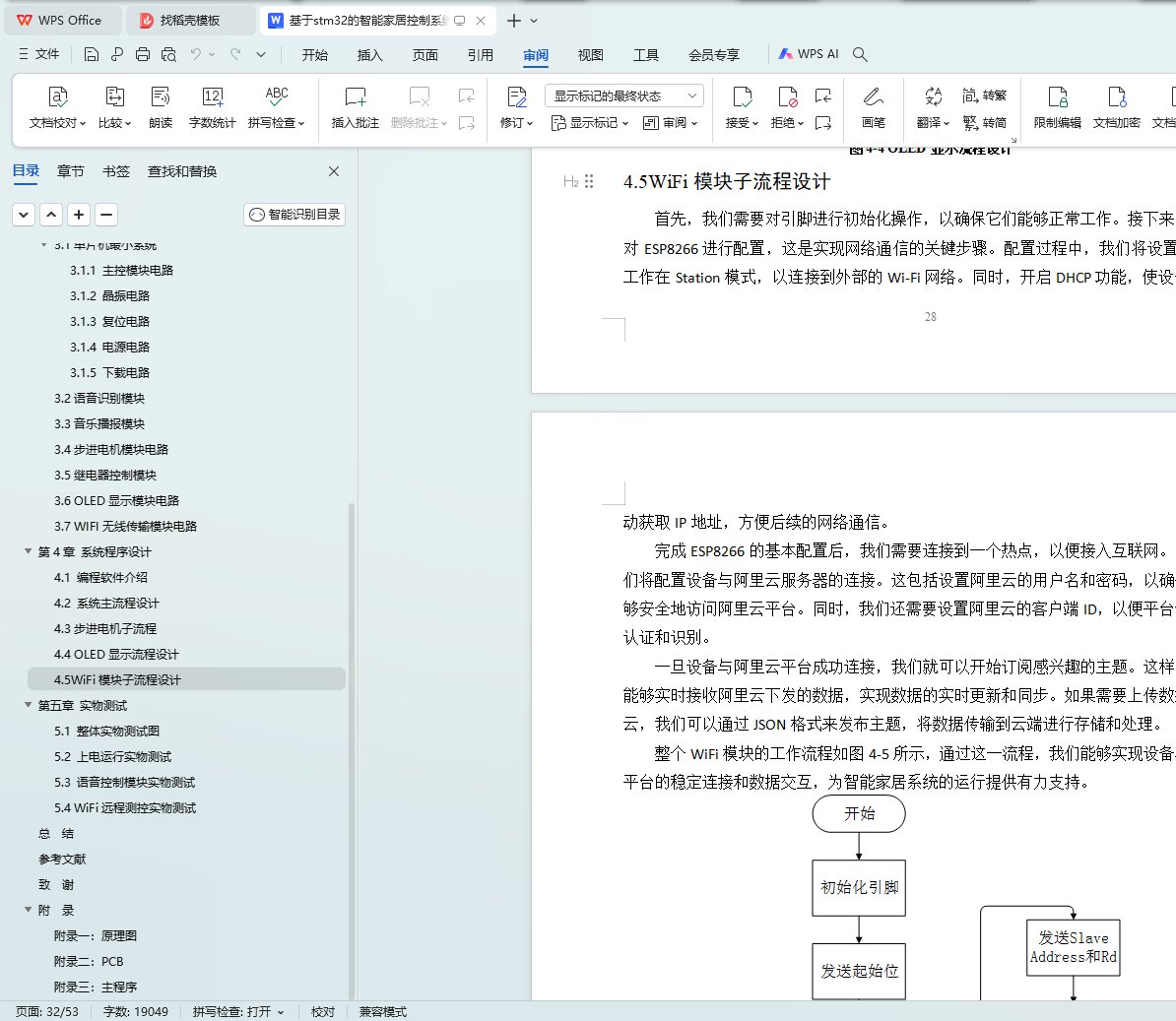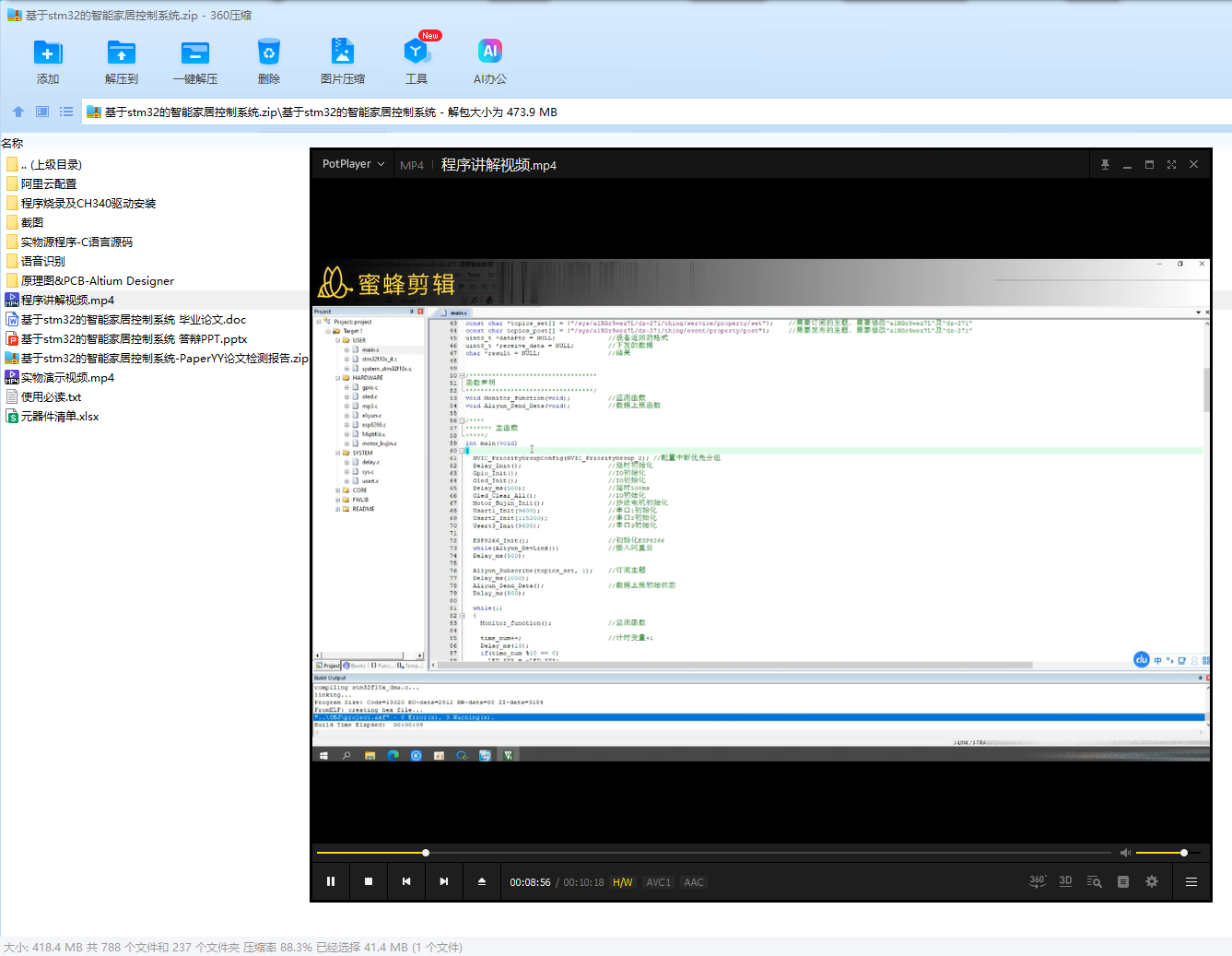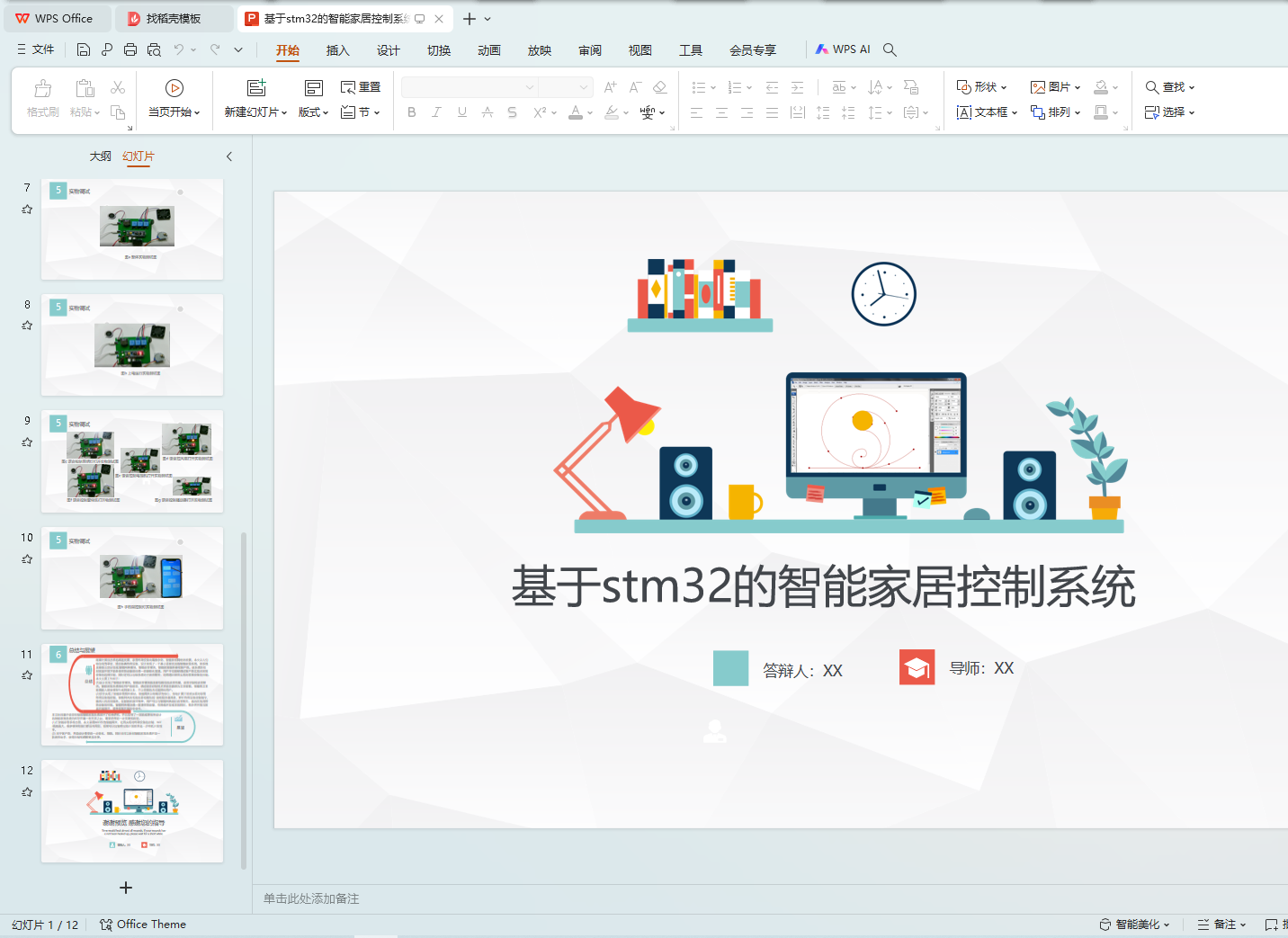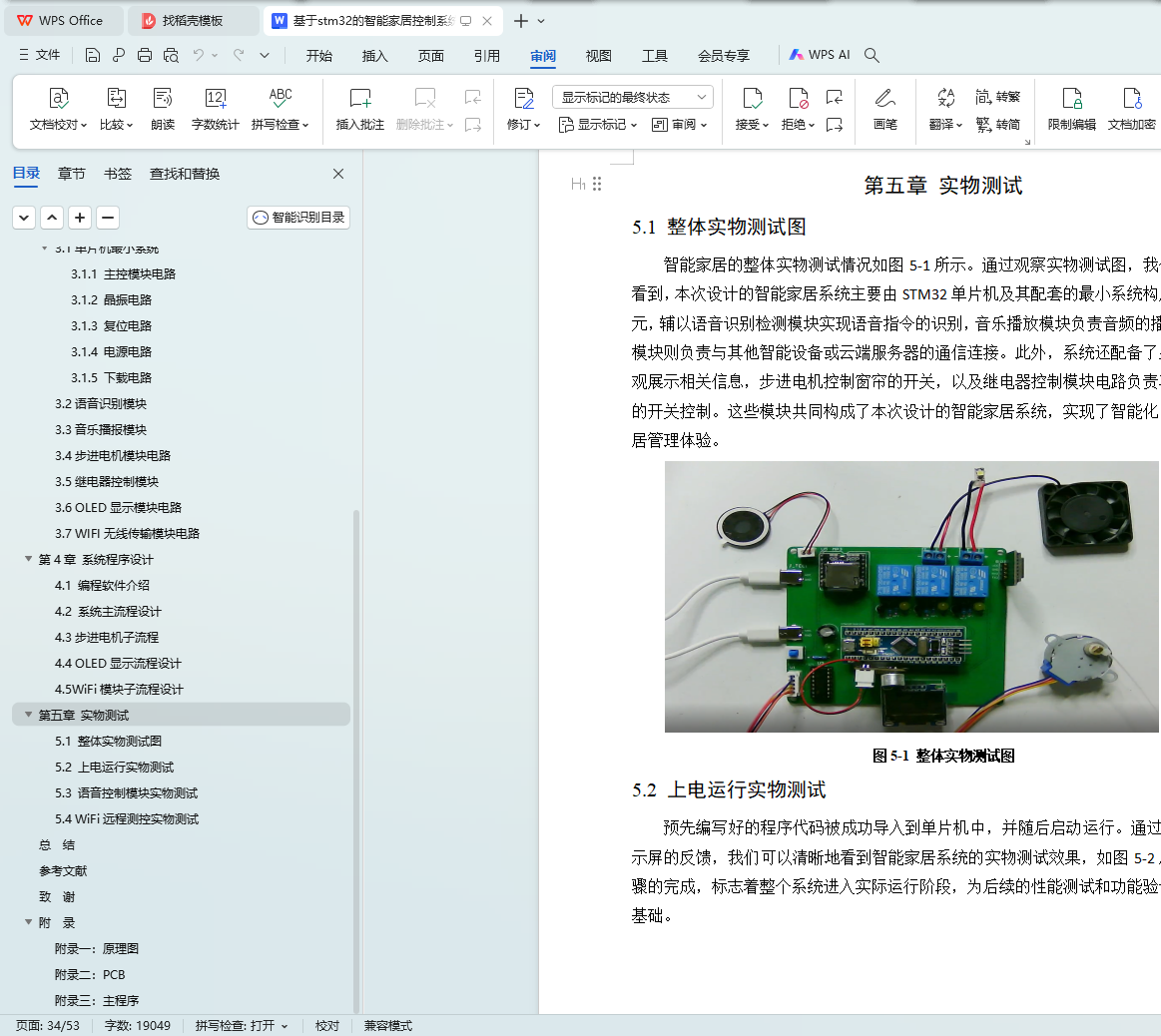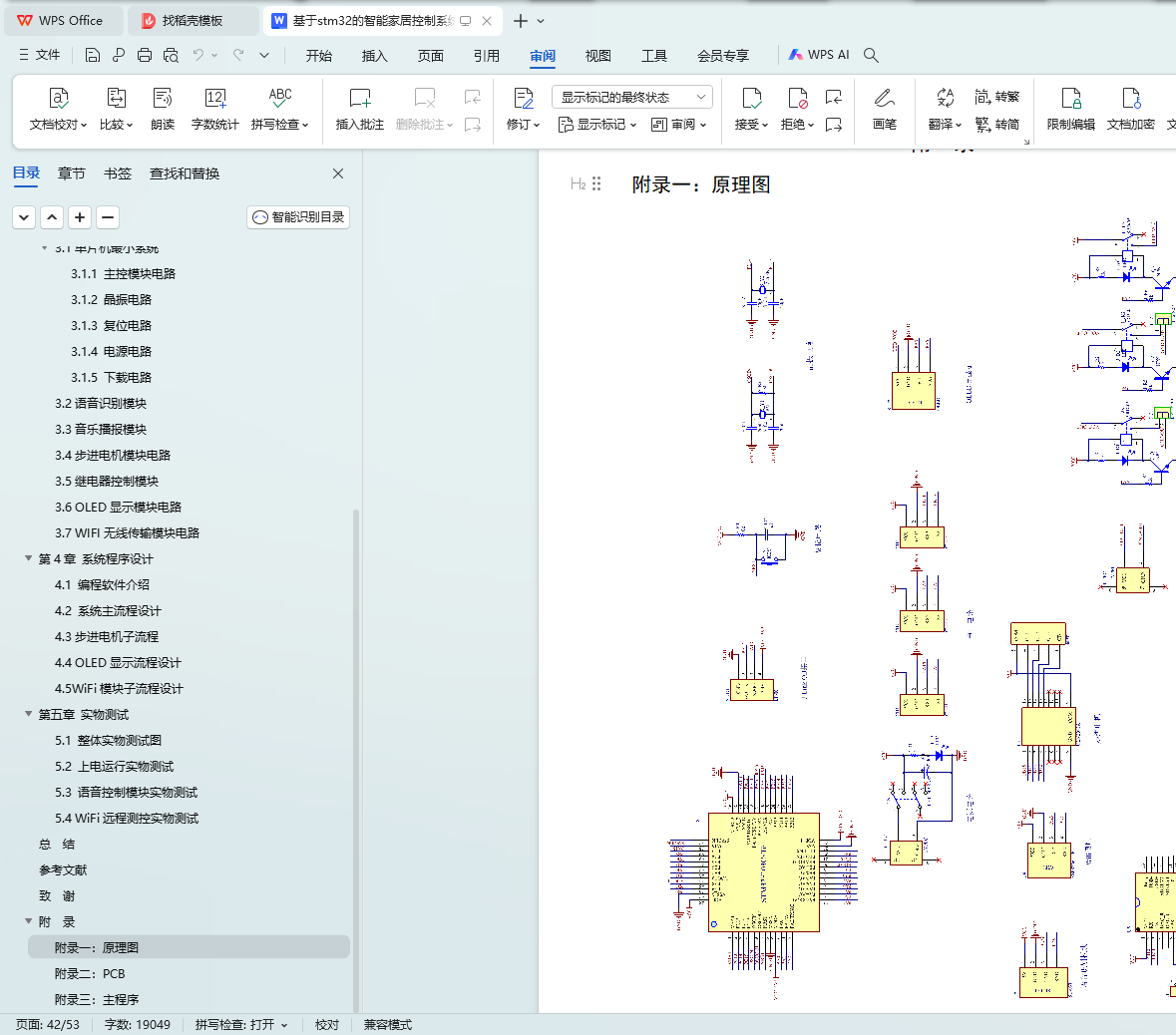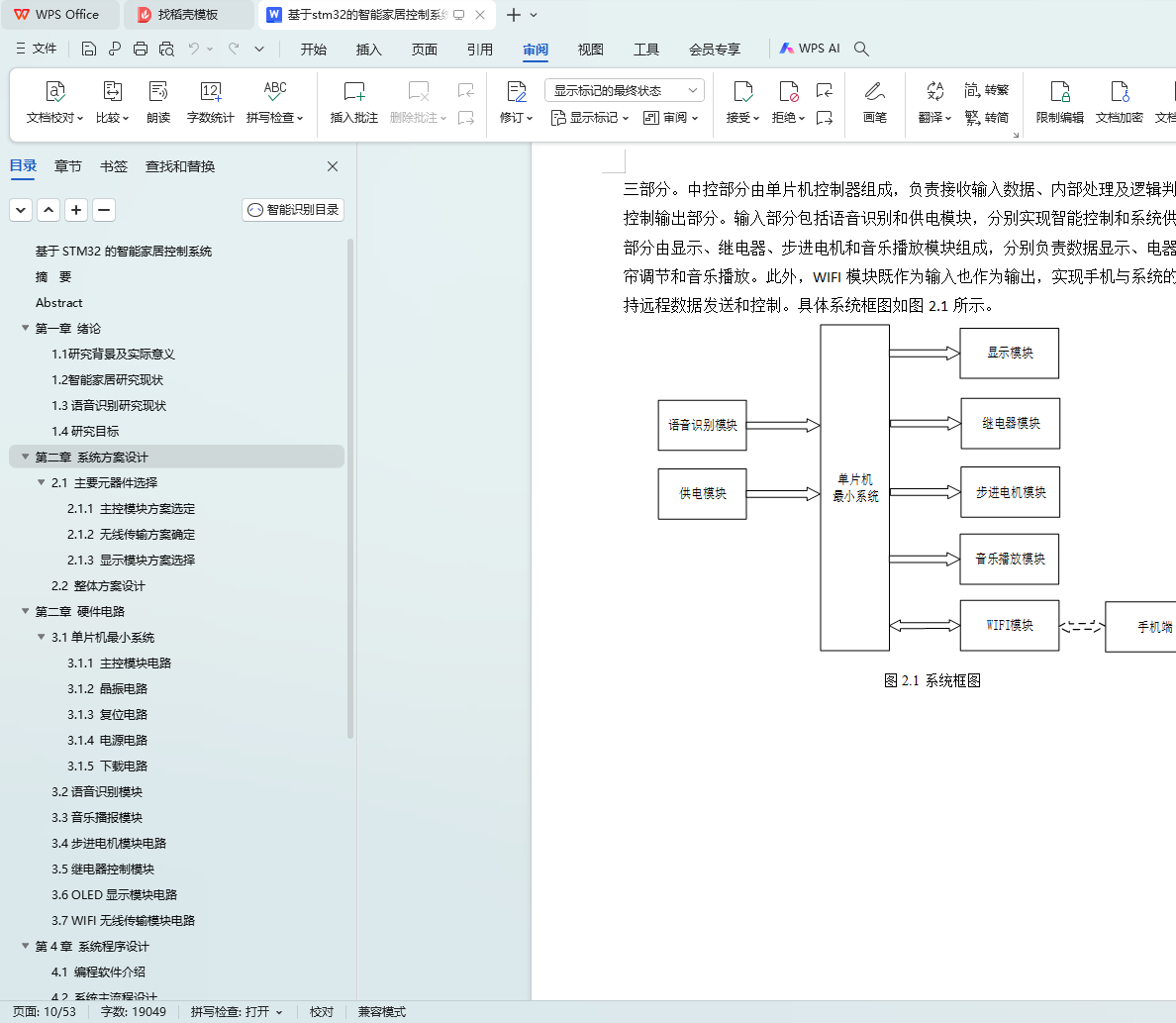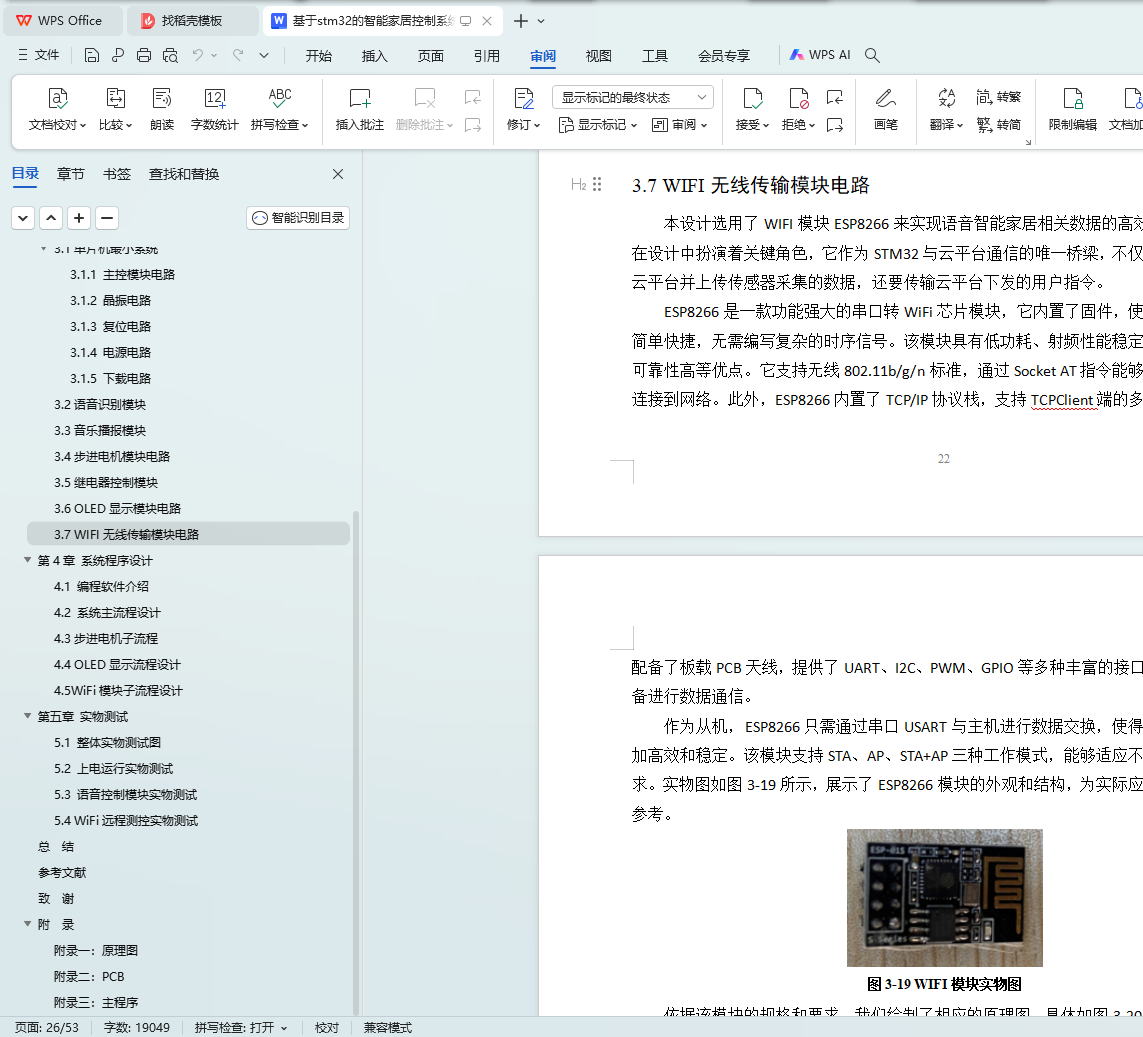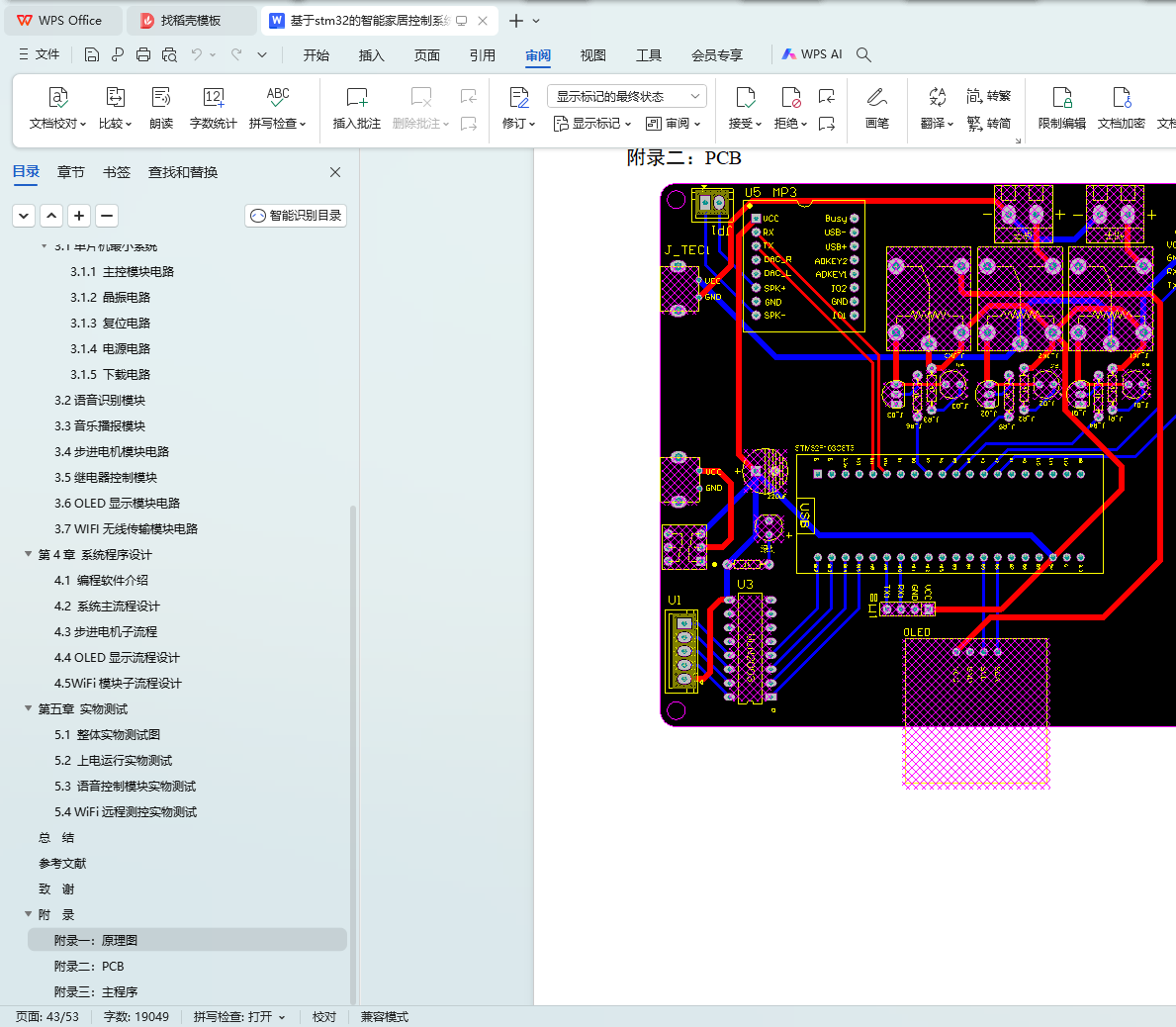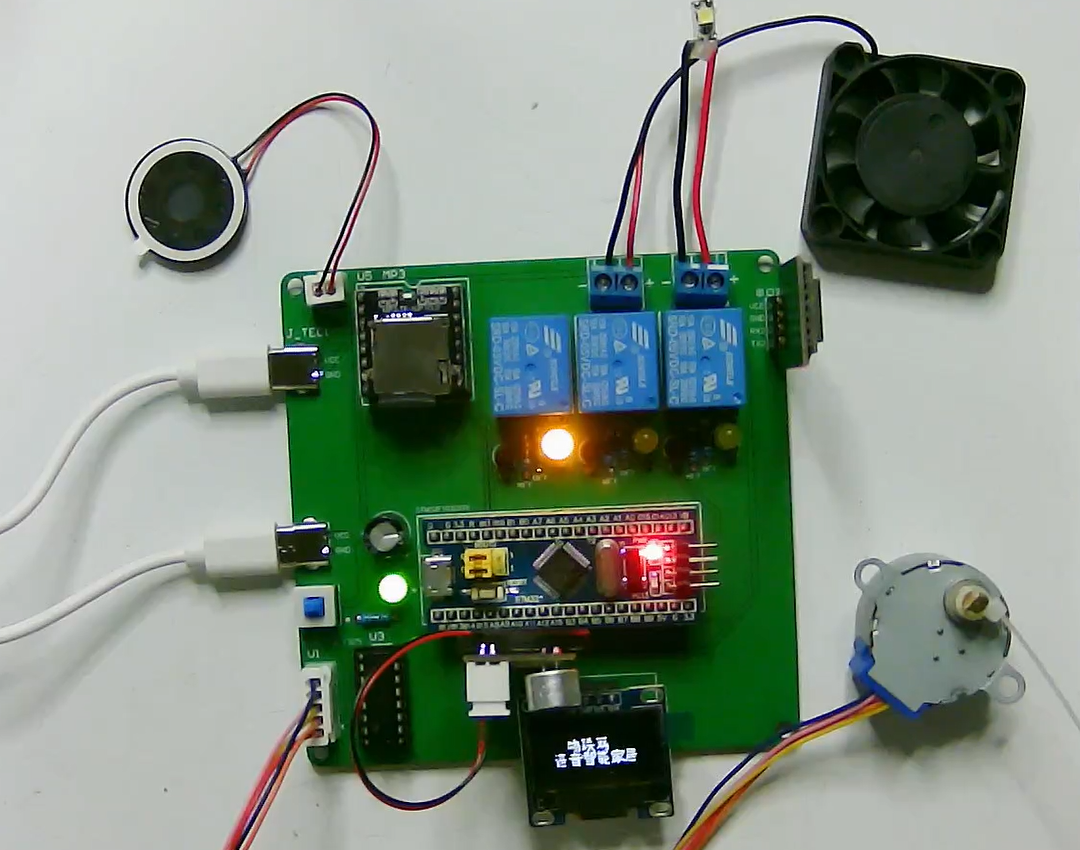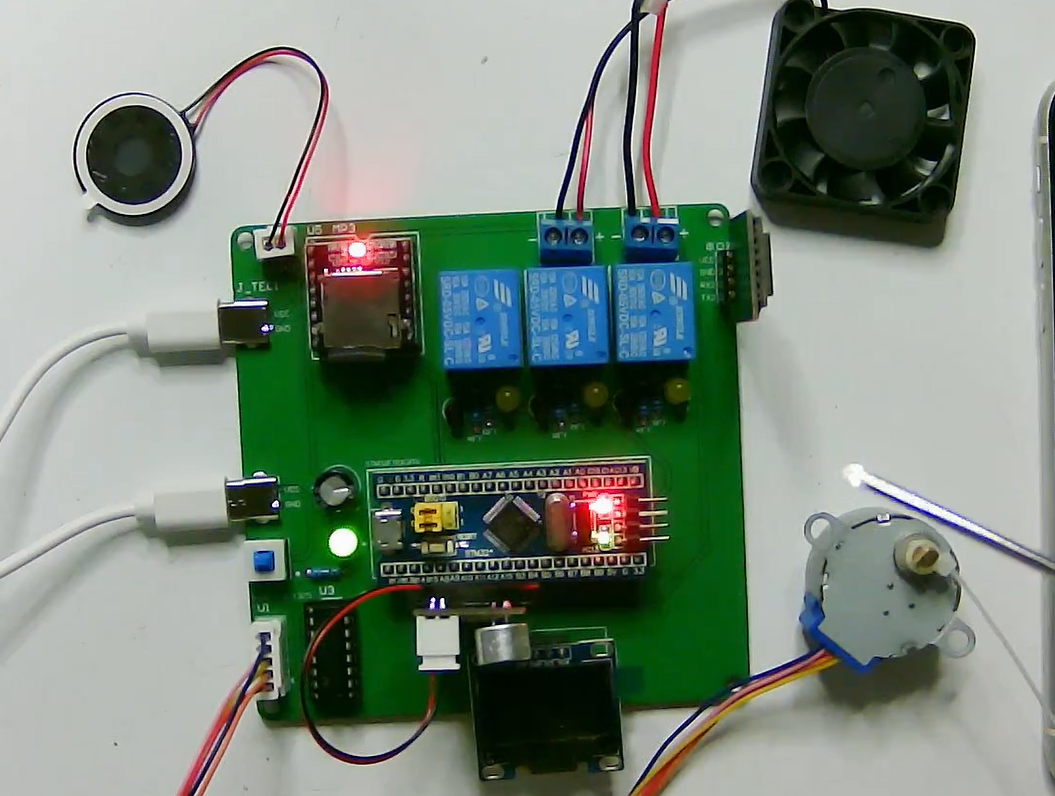基于STM32的智能家居控制系统
摘 要
近年来,语音识别技术在智能家居控制的应用逐渐流行,语音识别技术的应用在改变我们生活习惯的同时,也为我们营造更便捷的居住环境和提升家居系统的舒适性、智能性。
本文旨在为用户设计一款操作简单,可控制多个家电设备的低成本控制系统,实现控制系统的智能化和便捷化。该系统以STM32单片机作微处理器,支持语音和WiFi等方式操控的智能家居系统。本设计通过SU-03T语音识别模块对各类电器进行控制,采用三个继电器分别控制照明灯、风扇和电视机的开关。采用,采用通过步进电机正反转模拟窗帘的开关,通过MP3进行音乐播放模块,语音模块控制播放音乐、停止播放、上一首、下一首、音量加、音量减等。除此之外,通过WIFI模块,可以实现手机端APP远程控制各继电器、播放器的工作,也可以将系统端的相关数据传输到手机端进行显示。
经测试,语音识别系统实现了预定功能,该体系操作简单、适用性强。能够进行推广使用。
关键词:智能家居;语音控制;继电器;单片机;WiFi
Abstract
In recent years, the application of voice recognition technology in smart home control has gradually become popular, and the application of voice recognition technology has changed our living habits, but also created a more convenient living environment for us and improved the comfort and intelligence of the home system.
The purpose of this paper is to design a low cost control system which is simple to operate and can control multiple home appliances, and realize the intelligence and convenience of the control system. The system uses STM32 single chip microcomputer as the microprocessor, and supports the intelligent home system controlled by voice and WiFi. This design uses SU-03T speech recognition module to control all kinds of electrical appliances, and uses three relays to control the switch of lighting, fan and TV respectively. The switch of positive and negative rotation of the analog curtain through the stepper motor, music playback module through MP3, voice module control to play music, stop playing, last song, next song, volume increase, volume decrease, etc. In addition, through the WIFI module, the mobile APP can remotely control the work of each relay and player, and the relevant data of the system can also be transmitted to the mobile phone for display.
After testing, the speech recognition system has realized the predetermined function, and the system is simple to operate and has strong applicability. Can be promoted and used.
Key words: smart home; Voice control; Relay; Single-chip computer; WiFi
目 录
基于STM32的智能家居控制系统
摘 要
Abstract
第一章 绪论
1.1 研究背景及实际意义
1.2 智能家居研究现状
1.3语音识别研究现状
1.4研究目标
第二章 系统方案设计
2.1 主要元器件选择
2.1.1 主控模块方案选择
2.1.2无线传输方案选择
2.1.3显示模块方案选择
2.2 整体方案设计
第三章 硬件电路
3.1单片机最小系统
3.1.1 主控模块电路
3.1.2 晶振电路
3.1.3 复位电路
3.1.4 电源电路
3.1.5 下载电路
3.2语音识别模块
3.3音乐播报模块
3.4步进电机模块电路
3.5继电器控制模块
3.6 OLED显示模块电路
3.7 WIFI无线传输模块电路
第4章 系统程序设计
4.1 编程软件介绍
4.2 系统主流程设计
4.3步进电机子流程
4.4 OLED显示流程设计
4.5WiFi模块子流程设计
第五章 实物测试
5.1 整体实物测试图
5.2 上电运行实物测试
5.3 语音控制模块实物测试
5.4 WiFi远程测控实物测试
总 结
参考文献
致 谢
附 录
附录一:原理图
附录二:PCB
附录三:主程序

